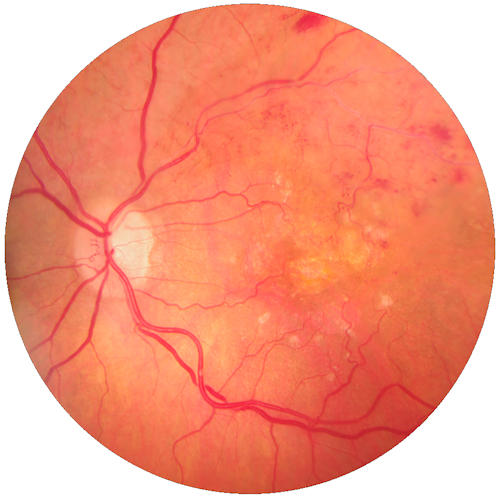
What is Retinal Vascular Occlusion?
Retinal vascular occlusion is a condition caused by the blockage of blood vessels in the retina. Occlusions can occur in retinal arteries (arteries) and retinal veins (veins).Retinal vein occlusions can be central (CRVO) or branch (BRVO). It is important to distinguish between these in monitoring the course of the disease.
What are the Risk Factors for Retinal Vascular Occlusion?
Advanced age, smoking, hypertension, diabetes mellitus, heart disease, high cholesterol, and diseases that may cause bleeding or clotting disorders are significant risk factors. Additionally, certain eye-related conditions can trigger vascular occlusions, with glaucoma (eye pressure) being the most important.What are the Symptoms of Retinal Vascular Occlusion?
Vascular occlusions typically affect the nourishment of the retinal tissue, leading to bleeding, edema, and ischemic (lack of blood supply) damage, resulting in vision loss. Symptoms vary depending on the type and size of the occluded vessel in the retina. Central retinal vein occlusion causes significant vision loss, while branch vein occlusion may not always result in vision loss. Vision is affected depending on the involvement of the macula, the central area of vision. Symptoms may include floaters, black spots, and color vision disturbances due to bleeding.Retinal artery occlusions manifest as sudden and near-complete vision loss. It is a condition that requires immediate intervention. Pain does not always accompany it.
How is Retinal Vascular Occlusion Diagnosed?
Diagnosis is made through a dilated fundus examination after applying pupil-dilating drops.Imaging techniques such as Fundus Fluorescein Angiography (FFA) and Optical Coherence Tomography (OCT) are valuable in determining the presence and size of vascular occlusions, determining the treatment approach, and evaluating the response to treatment.
OCT is a rapid imaging technique that scans the central vision area in thin sections with laser. It is very useful in evaluating the presence of edema, membrane formation on the macula, and hole formation on the macula, as well as in assessing the response to treatment.
FFA is a non-radiation angiography performed by injecting contrast material into the patient's forearm, allowing for better examination of retinal vascular structure. It is very useful in detecting areas of non-perfusion called ischemia in the retina, new vessel formations on the retina and optic nerve, and leaking vessels.
How is Retinal Vascular Occlusion Treated?
- Treatment primarily targets the underlying condition, and decisions are made after a detailed eye examination.
- Treatment options for retinal vein occlusion include Anti-VEGF drug injections, argon laser treatments, and surgical procedures.
- Argon laser treatment reduces the formation of new vessels and increases retinal oxygenation by applying it to ischemic areas of the retina where the blocked vessel is located.
- Anti-VEGF and steroid injections are applied into the vitreous of the eye. They are effective in reducing or eliminating new vessel formations on the retina and optic nerve. They are also effective agents in reducing macular edema. Regular injection applications can preserve vision and improve visual acuity.
- Surgical treatment (vitrectomy) is the method of choice if there are intraocular hemorrhages or if membranes that contract and shrink the retinal surface have developed.
- Various methods are available to increase oxygenation and blood supply to the eye in cases of retinal artery occlusion (eye massage, intraocular pressure-lowering medications, hyperbaric oxygen therapy). Early intervention is necessary.
- Early diagnosis and treatment can lead to visual improvement.




